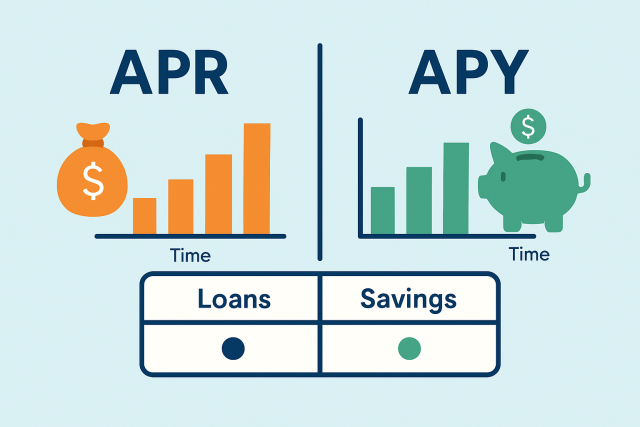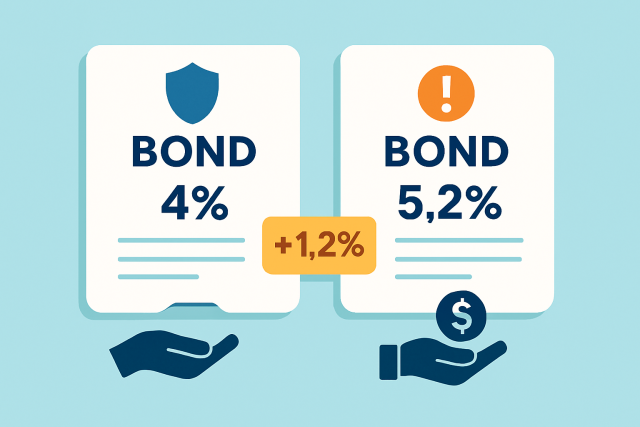Maple Finance Explained for DeFi Borrowers and Lenders


Maple Finance is a cutting-edge decentralized finance (DeFi) platform that brings borrowers and lenders together in a permissionless, trust-minimized environment. It shines in providing institutional-grade lending and borrowing, steadily carving out its space as a key player in the ever-expanding DeFi world.
Users often face challenges like high volatility, a general lack of trust and confusing interfaces in the wider world of DeFi lending and borrowing. Unlike traditional finance where middlemen handle loans and approvals with old-school flair, DeFi platforms offer decentralized alternatives that aim to be more transparent, cheaper and faster.
What Maple Finance Is All About
Maple Finance is a decentralized platform that brings together institutional borrowers and liquidity providers using blockchain smart contracts. Think of it as a kind of digital handshake offering open access to capital pools where loans are managed with transparency and rock-solid security—no need to rely on traditional banks or middlemen anymore.
Unlike most DeFi platforms that mainly cater to retail users, Maple Finance takes a different route by connecting straight to institutional finance and offering heftier loan amounts with tailored underwriting. On the lender side, it presents carefully vetted pools and opportunities where risk is managed thoughtfully. It strikes a rare balance that sits comfortably between fully permissionless DeFi and traditional finance.
How Maple Finance Actually Works (And Why It Matters More Than You Think)
Maple Finance operates by pooling liquidity from providers and then lending it out to approved institutional borrowers. There’s a whole cast of characters behind the scenes—participants and smart contracts alike—taking care of everything from credit checks and loan issuance to repayments and governance.
Liquidity providers pitch cryptocurrencies like USDC into specially designated lending pools.
Institutional borrowers apply to tap into the capital held in these pools.
Dedicated credit teams carefully evaluate each borrower's creditworthiness before approving loan requests.
Once approved, loans are handed out with clearly outlined terms including interest rates and maturity dates.
Borrowers pay back the principal along with any interest that accumulates over time.
Meanwhile, liquidity providers earn returns based on their share of the pool from repayments and any fees collected. It’s a steady way to grow their stake.
Credit teams play a vital role in carefully reviewing borrowers and managing default risks. This approach really stands out compared to fully permissionless protocols, where loans might get the green light with hardly any scrutiny at all.

Main Features of Maple Finance for Borrowers You Should Know
- Access to borrowing on an institutional level with larger loan amounts you do not see every day on usual retail DeFi platforms.
- Interest rates that tend to be pretty competitive thanks to smarter capital use and trimming out the usual middlemen.
- Loan terms crafted through negotiation to fit the specific needs of institutional borrowers because one size definitely doesn’t fit all.
- Fast loan disbursement made possible by streamlined credit approvals and smart contracts.
- Credit evaluations handled by seasoned teams who provide tailored risk assessments—no cookie-cutter stuff here.
- Bye-bye to traditional banking middlemen which often means fewer headaches and less waiting around and way less paperwork.
Borrowers using Maple Finance enjoy compelling benefits thanks to a blend of institutional-level services and the efficiencies of DeFi. For example, a blockchain startup aiming to raise 5 million dollars can lock in competitive loans quickly, skipping the months-long process with banks. Credit teams tailor terms to fit each borrower's unique profile and strive to balance fair interest rates with flexible repayment options.
The Main Features of Maple Finance That Lenders Will Appreciate
- A variety of lending pools that come with different levels of risk and potential returns, so there’s something for everyone’s taste.
- Opportunities to earn yields that often outshine what traditional savings accounts or staking options bring to the table.
- Easy access to up-to-the-minute info on pool performance and borrowing stats, keeping you in the loop without breaking a sweat.
- The chance to jump into protocol governance and actually have a say in shaping platform policies and updates—because your voice matters.
- Risk reduction thanks to thorough evaluations by an on-chain credit team and careful borrower screening, helping you sleep a bit easier at night.
- Liquid secondary markets where you can trade pool tokens freely, giving you that extra bit of flexibility when you need it most.
Lenders find themselves at an advantage when they invest their crypto through pooled loans. They benefit from diversified risk and smartly structured credit strategies that help keep the odds of default lower. Rather than going the direct lending route, pooled participation lets providers spread their capital more effectively and track returns in a straightforward no-nonsense way.
Taking a Closer, More Thoughtful Look at Risks and Security in Maple Finance
Maple Finance offers innovative financial products but there’s always some risk with any investment. Users should watch for smart contract vulnerabilities, borrower defaults, and market fluctuations. The platform works to manage these risks through audits, credit checks and solid governance. Some risks will always remain like a stubborn stain.
- Smart contract security leans heavily on thorough third-party audits before launch because when it comes to code, you don’t want to leave any stone unturned.
- Collateral requirements along with ongoing monitoring act like vigilant watchdogs to keep lender funds safe and sound.
- The credit team rolls up their sleeves to carefully evaluate borrowers, aiming to keep those pesky defaults at bay.
- Pool diversification is the go-to strategy to spread and manage risk, preventing everything from going all eggs in one basket.
- Some protocols wisely include insurance or reserve funds just in case life throws an unexpected curveball.
- Active governance keeps the protocol nimble, ready to jump on vulnerabilities or market shifts without missing a beat.
Maple Finance brings unique risks to the table that differ from typical traditional finance risks. Think potential smart contract bugs and the usual rollercoaster of crypto market volatility. Its open and transparent protocols combined with multiple protection layers are designed to tackle these challenges head-on. Users usually get the best results by carefully reviewing pool metrics, borrower feedback and platform updates before diving in.
Your Handy Step-by-Step Guide to Borrowing with Maple Finance
Set up and link a compatible crypto wallet like MetaMask or Coinbase Wallet. It is your gateway to the whole process.
Take a leisurely stroll through the open lending pools on Maple Finance to get a solid feel for what capital and terms are available.
When you are ready, apply for a loan on the platform and be clear about the amount you need and what you plan to do with it.
Then comes the credit review where the assigned teams carefully assess the risk. It is like a financial handshake to see if you’re a good bet.
Once you get the green light, the loan lands right in your wallet with no fuss.
Keep an eye on your repayments through the platform’s interface to stay in good standing and keep your credit record sparkling clean.
Borrowing successfully requires having your application clear and accurate. This really helps speed things along during those sometimes tedious credit reviews. Don’t push your borrowing limits too far because it’s better to stay within your comfort zone and plan your repayment schedule around your financial outlook.
Your Friendly Step-by-Step Guide to Lending with Maple Finance
It is like getting your keys to the kingdom.
Take a good, careful look at their risks and potential returns.
It’s as simple as planting a seed and watching what grows.
They’ll show you the interest you’ve earned and borrower activity.
Based on your yield goals and what the market’s doing. Flexibility is the name of the game here.
Snag the best returns while keeping risk under control by spreading your lending across a few different pools that offer various terms and a mix of borrower profiles. Keep a close watch on key indicators of pool health like utilization rates and borrower credit ratings which you can easily check on Maple Finance dashboards.
How Maple Finance Measures Up When You Size It Against Other DeFi Lending Platforms
| Platform Name | Permission Model | Borrower Type | Risk Management | Interest Rates | Unique Features |
|---|---|---|---|---|---|
| Maple Finance | Permissioned, supported by credit teams | Institutional borrowers | Carefully managed by credit teams, with solid collateral and diversified loan pools to spread the risk | Competitive and negotiated, tailored to the borrower | Geared towards institutions, offers pooled lending, and encourages active governance roles |
| Aave | Open to all | Both retail and institutional borrowers | Relies on overcollateralization and swift liquidation processes to keep things stable | Offers a choice between variable and stable rates, depending on your style | Known for its flash loans and support for a wide range of collateral types, making it quite versatile |
| Compound | Open to all | Both retail and institutional borrowers | Depends on overcollateralization and a robust on-chain governance system to manage risk | Interest rates flex with market supply and demand, automatically adjusting | Automatically tweaks interest rates in real time, keeping pace with the market |
| MakerDAO | Open to all | Anyone who can provide collateral | Oversees collateralized debt positions with a keen eye | Charges a stability fee to maintain balance | Issues stablecoins and actively involves MKR holders in governance, keeping the community engaged |
Maple Finance really carves out its niche by focusing squarely on institutional borrowers who go through serious credit oversight unlike fully permissionless platforms like Aave or Compound that mostly cater to retail users. This strategy adds an important layer of risk management but limits accessibility a bit. For lenders, Maple offers a level of transparency and governance control that’s hard to beat compared to many other options.
Upcoming Developments and the Roadmap for Maple Finance
Maple Finance is constantly evolving with ambitious plans to refine governance models and expand lending pools by bringing in new asset classes. It also plans to roll out more advanced credit scoring technologies. Upcoming protocol updates aim to beef up security, smooth the user experience and unlock better interoperability with other DeFi protocols.






